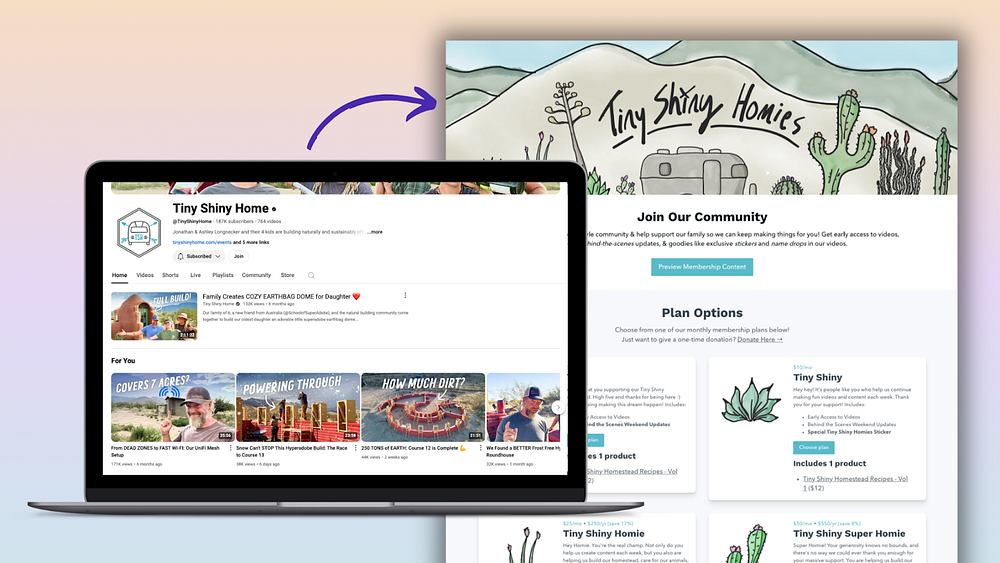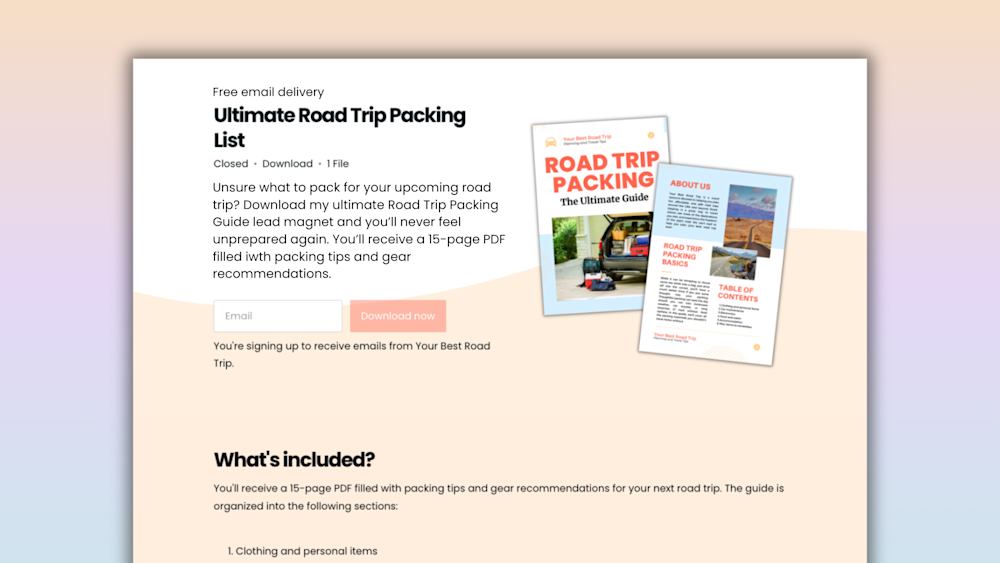The time has finally come.
After hours upon hours of brainstorming, research, and hard work, you’re ready to launch and sell your digital product. You know that you’ve created something your audience will love and benefit from, and you can’t wait to share your expertise and ideas with the world.
There’s just one question left: How do you get your product in front of that audience?
There are countless ways to promote a new product, from hopping on the latest social media trends to launching a celebrity influencer marketing campaign.
But not every marketing tactic works for every audience, and it can be tricky to figure out which one is right for your brand, product, and customers.
We put together this guide to help you navigate that marketing maze.
We’re sharing four tried-and-tested marketing tactics for promoting new products, so you can set your product launch up for success — no TikTok dances required (unless you want them to be).
Let’s start with a digital classic: email marketing.
1. Reach your audience with email marketing
Trendy online marketing channels may come and go, but email stands the test of time as a cost-effective way to stay in touch with your audience.
Over 4 billion people will use email this year, collectively sending about 320 billion emails per day. And 73% of consumers rank email as their top channel for marketing messages.
For entrepreneurs on a budget, every dollar counts. At around $42 for every $1 spent, email has one of the highest returns on investment (ROI) of any marketing channel. Plus, 59% of marketers cited email as their top source of ROI in 2018.
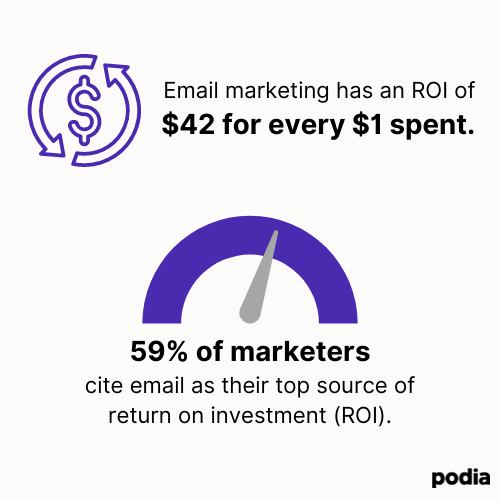
Before you can promote your new product through email, you need to build your email list. Subscribers need to opt-in to hear from you.
One way to encourage potential customers to sign up for your email list is via lead magnets. A lead magnet is a high-quality resource, like a free digital download, that users receive in exchange for their email address.
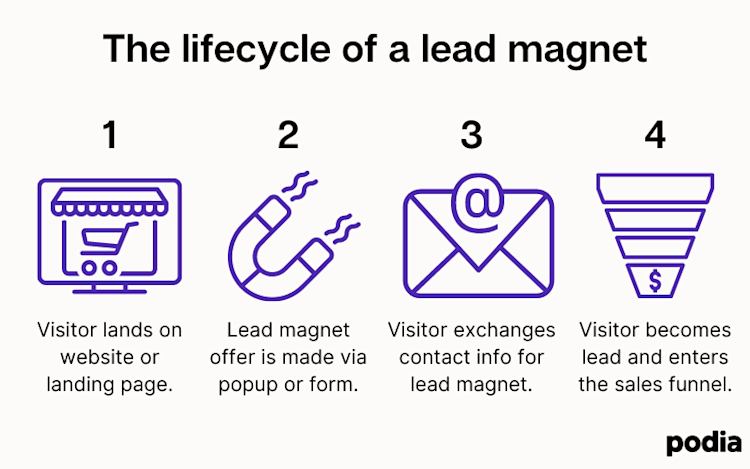
They give you their contact info, you give them valuable content. It’s a win-win for everyone involved.
A good email lead magnet does three things:
-
Addresses your target audience’s specific pain points and goals.
-
Establishes your credibility as an expert in your niche.
-
Makes people want to learn more about you and your products.
Lead magnets can also help you learn more about your audience. For example, Ryan of Signature Edits offers two lead magnets: a candid posing guide and a sample pack of photo editing presets.

When someone downloads one of the lead magnets, Ryan uses email segmentation to send them follow-up email campaigns about relevant content and products.
If someone signs up for the editing preset pack, Ryan knows that editing is a point of interest for that person and can confidently promote new editing products to that lead.
For more lead magnet ideas, check out this guide to creating a lead magnet in 90 minutes or less.
Don’t wait until you’re ready to launch a new product to get in touch with your email list. If you don’t already have an email newsletter, we recommend starting one ASAP. A newsletter is a simple, low-cost way to build relationships with your audience.
Email newsletters can include:
-
Product updates and announcements
-
Content roundups, including blog articles and resources
-
Industry news
-
Helpful tips for your audience
-
Anything your subscribers find interesting or helpful
For example, Emily Mills, founder of Sketchnote Academy, uses her newsletter to keep subscribers up-to-date on new live workshops. Emily includes a newsletter signup form on her homepage.
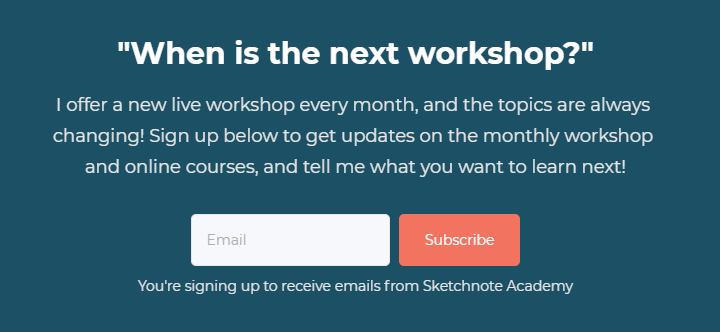
When you send your subscribers valuable, engaging content on a regular basis, they get to know and trust you and your brand.
Then, when you have a product launch coming up, you can share updates and announcements through your newsletter. Come launch day, you’ll have loyal subscribers who are excited about and ready to buy your new product.
Learn more in this guide to starting a newsletter and take a look at these 18 newsletter examples for more inspiration.
For even more tips on writing top-notch emails, check out these resources:
Email marketing and content marketing go hand-in-hand. The more valuable, engaging content you offer your audience now, the readier they’ll be to buy your new offering on launch day. Creating that content for your blog is another way to set your product launch up for success.
That’s what our next tip is all about.
2. Create valuable blog content
People love blogs.
77% of internet users read blogs, and internet users in the U.S. spend 3X more time on blogs than on email.
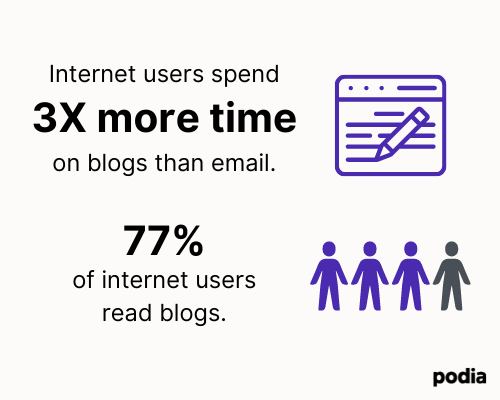
Plus, blogging is good for your bottom line. Businesses with a blog generate about 67% more leads than those without one.
Here’s how starting a blog can lead to a more successful product launch:
-
Your target audience discovers your blog content.
-
They learn from your articles, find your blog valuable, and begin to trust your expertise.
-
They sign up for your email list or follow you on social media.
-
You keep them updated about your product launch.
-
They’re excited to buy your new product, support you, and continue to learn from you.
The key here is to create blog posts that provide real value. Create blog content that is related to your products, but make sure they’re not just longform product promotions.
For example, if you’re selling an online course on making homemade pasta from scratch, you could write a blog post about matching the right sauces with the right pasta shapes.
Your followers will come to trust your pasta expertise, making it a no-brainer to buy your pasta course as soon as it launches.
Make sure to write your blog content with search engine optimization (SEO) in mind. When you optimize your blog content for search, you make it easier for your target audience to find you when they’re searching for relevant keywords and phrases.
Getting those top spots on the results page matters. The first five results of a Google search account for 67.6% of all clicks.
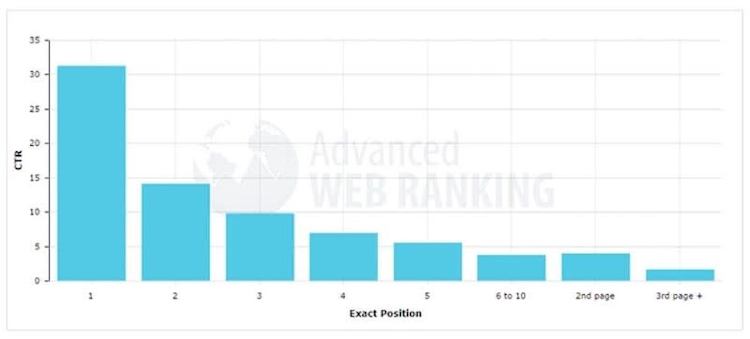
SEO can mean the difference between a good blog with just a few readers and an amazing blog bringing in visitors by the thousands. It’s also a whole lot cheaper than traditional advertising — and more effective.
A Databox survey found that 70% of marketers say that SEO is better than pay-per-click ads for generating sales. That’s why nearly 64% of marketers actively invest time in SEO.
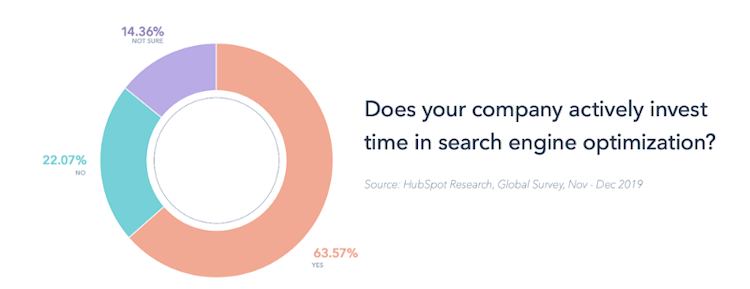
Here are some resources to help you get started with SEO:
-
A step-by-step guide to SEO for selling digital products
-
A guide to DIY your blog SEO on a budget
-
Simple SEO tips that require zero technical skills
-
A list of 11 free SEO tools for creators
Once you publish blog content, you can repurpose it into other formats, from ebooks to podcast scripts. Repurposing content is one of our favorite small business marketing strategies. Instead of creating content from scratch, you can get more out of your existing content.
One great way to repurpose your blog content is by turning it into a social media post, and that brings us to our third product launch marketing strategy.
3. Connect with potential customers on social media
When you’re getting ready to launch a new product, social media is a great platform to build buzz and get customers on board early. 59% of Gen Z and 55% of millennials discover products on social media.
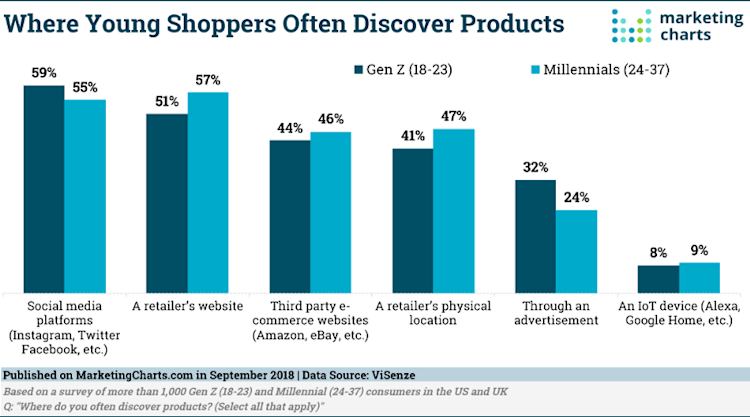
That may be why so many creators and entrepreneurs use social media to sell digital products.
If you’re new to social media marketing, getting started can feel overwhelming. Should you use organic or paid social media advertising? Which platforms should you post on?
You can find the best social media platforms for your small business by figuring out where your target market already spends their time online. And social media marketing works best when you combine organic and paid tactics.
Organic social media marketing is an effective way to engage with your community and potential customers, while paid social ads help you get more eyes on your products.
To build some buzz around your new product, Twitter is a solid platform choice. Take web designer and marketing guru John D Saunders, for example. In May 2020, John announced a new course with a video on Twitter:

John’s video let his audience know what to expect from the course and netted high engagement, with 30+ retweets and over 200 likes.
This isn’t John’s first foray into Twitter for his small business, either. Engaging his audience on Twitter and beyond also helped John earn $10,000 on launch day and $100,000 overall from his first course on Podia.
(If you’re selling digital products or online courses like John, check out Podia’s all-in-one platform. Get started today with a free 30-day trial.)
As I mentioned earlier, you can also repurpose existing content for social media posts. If you’re selling an ebook that includes industry data, for example, turn some of that data into an infographic, then post it on your Instagram, Twitter, or LinkedIn.
Infographics are liked and shared on social media three times more than any other type of content — and 40% of marketers report that original graphics (including infographics) are the most impactful type of visual content.
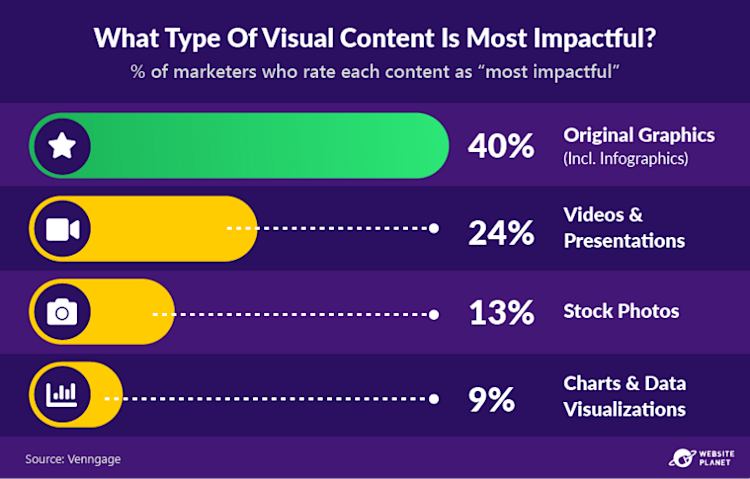
If you’re not a Photoshop pro, don’t worry. You don’t need to be a graphic designer to create eye-catching, shareable social media graphics. Free creator tools like Canva and Venngage offer templates that make creating infographics and other social media visuals a breeze.
On the paid social side, Facebook ads are a budget-friendly choice for small businesses and solopreneurs to get their products in front of a larger audience.
Organic posts are like word-of-mouth marketing; your reach is limited to your followers and who they share your posts with. Paid social media lets you reach more of the right people with ultra-specific targeting tools like Facebook Custom Audiences.
That’s probably why over 62% of marketers say that paid social media advertising has been at least somewhat effective for their business.
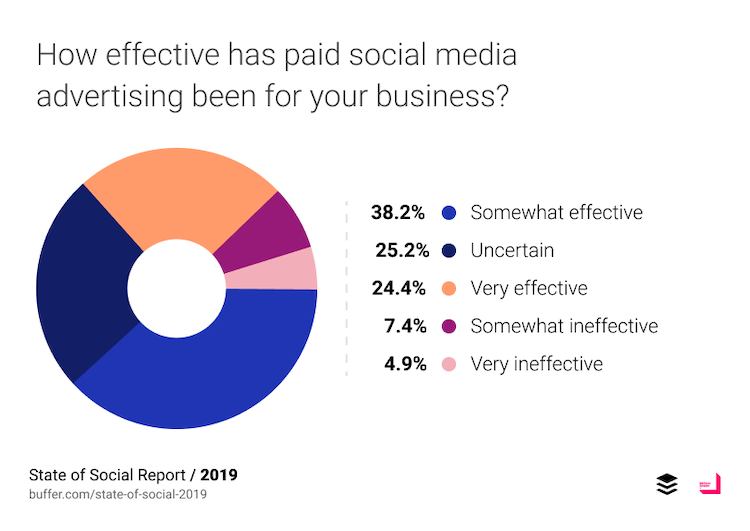
One perk of using Facebook ads is the variety of options for ad placements and formats, including video ads.
For example, business coach Melyssa Griffin used this video ad to promote her Pinterest workshop for bloggers. The “Learn More” button links to a signup page, and her ad copy and video explain the benefits attendees can expect from the workshop.
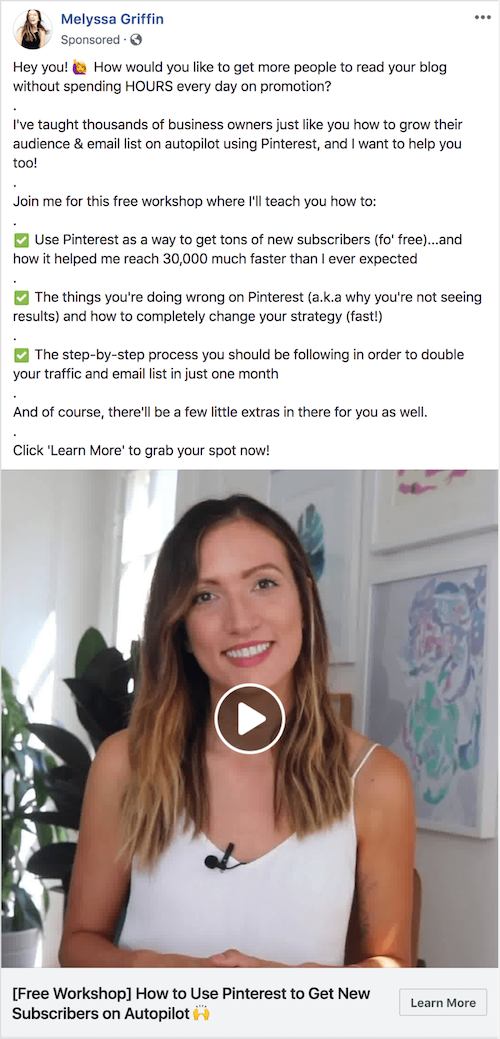
With the right audience targeting, Facebook ads like Melyssa’s translate to digital product sales for creators.
To learn more, check out this guide to Facebook ads for digital entrepreneurs and this deep dive into Facebook sales funnels.
At this point, you’re almost ready to turn visitors into loyal customers who are excited for your new product. Our next marketing technique keeps your audience moving toward the finish line.
4. Write an irresistible product page
You’re using the tips we’ve covered so far, and they’re working like a charm. Potential customers are flocking to your product page, ready to sign up for your presale and, later on, buy your product.
You need a page that makes all of your hard work pay off.
Before your product goes live, you can create a pre-launch landing page. A pre-launch landing page has two big benefits:
-
Validating your product ideas.
-
Building your email list leading up to your product launch.
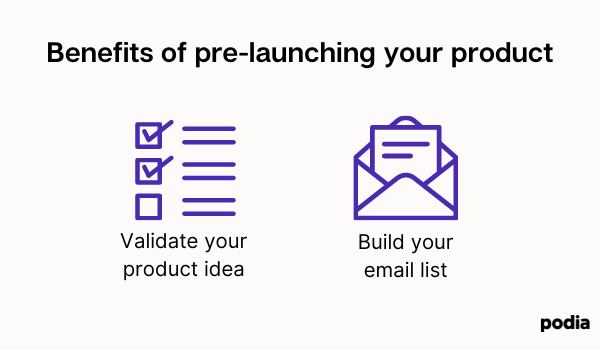
On your pre-launch landing page, include a short description of your new product and tell visitors why they should sign up to learn more and get notified when you launch.
You can also add an incentive for early pre-launch signups, like an exclusive discount, coupon code, or free content download.
If your product sounds like the right fit for them, they’ll enter their email address, which validates your product idea and gives you new customers to reach out to when your product launches.
(Learn more in this guide to pre-launching digital products. For even more tips, including a step-by-step tutorial for building a pre-launch landing page with Podia, check out this guide to landing pages and these landing page best practices.)
On launch day, that pre-launch page becomes a product page. What they find on that product page can mean the difference between a visitor clicking the “back” button or the “buy” button.
Don’t worry — you don’t have to be a professional copywriter to craft a sales page that converts. You just need to help your potential customers answer, “Is this for me?”
To answer that question, focus on the results your audience will gain from your product. How will it help them solve their problems? Why should they choose it over a competitor’s product?
That’s your unique value proposition (UVP): a clear statement that describes how you can solve your customer’s problem better than anyone else.
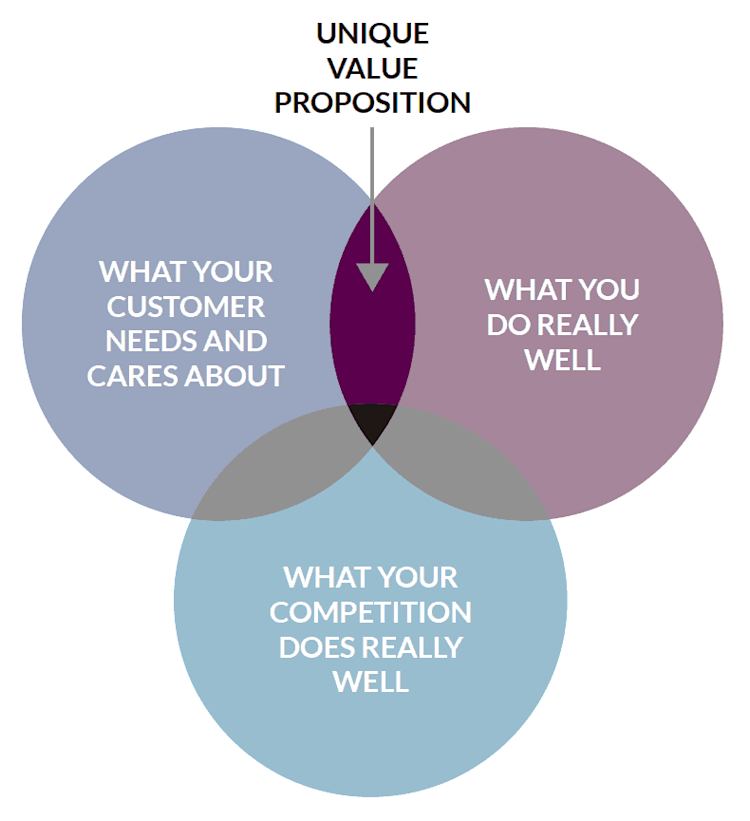
As you write your sales copy, keep in mind that results aren’t the same thing as features. When you have a product that you’re proud of, it can be tempting to list out every single detail. Instead of focusing on your product features, focus on its benefits.
Here’s why: A feature is a part of your product, while a benefit is the impact that feature has on your customer. In other words, features are all about your product. Benefits are all about your customers.
Take a look at Adrian Dalsus’ description of his business, Despegue Musical.
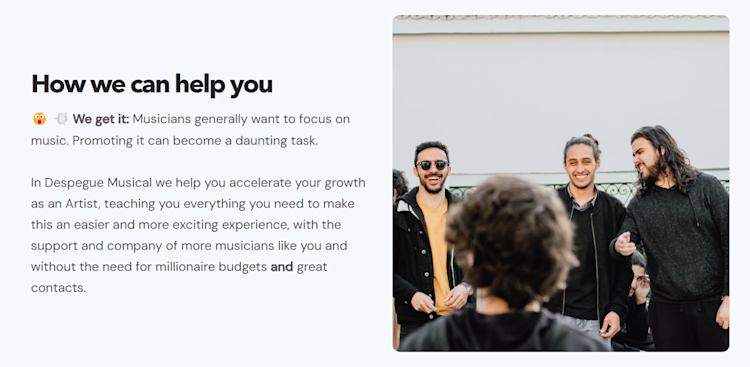
Adrian acknowledges his audience’s pain points. He understands that promoting music can be overwhelming for musicians in the industry — but he's here to help.
In other words, he helps his audience determine if the product is right for them by speaking directly to their pain points.
Another great way to highlight results on your product page is by displaying customer testimonials.
Only a third of people trust the brands they buy from. But 72% of consumers say that testimonials and reviews make them trust a business more, and 97% of buyers view customer reviews as more credible than any other type of content.
When you show off your customers’ results, you show potential customers, “This could be you.”
For example, Jay Acunzo includes customer testimonials on the sales page for Make What Matters, his membership community.
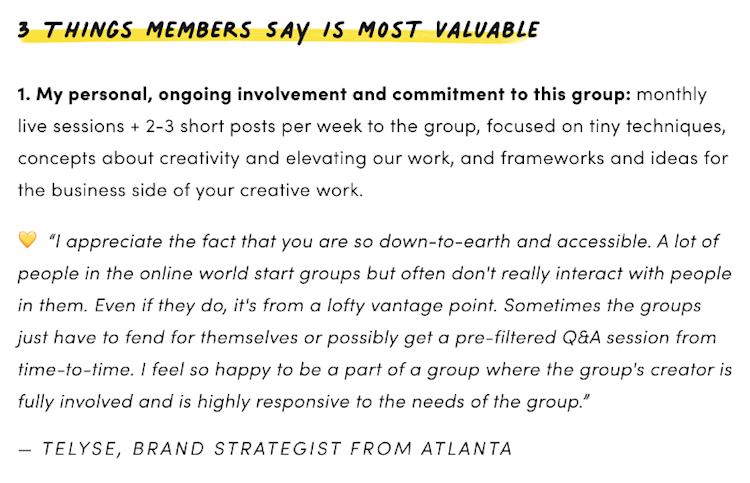
Jay could have included generic reviews about how rad his membership is.
Instead, he showcases specific testimonials on what his members find most valuable, showing potential customers how much they can gain from joining. (Learn how to ask for and use customer testimonials like Jay in this guide.)
Here is a resource on writing a product page that brings in sales:
One final note before we wrap up:
There’s no one-size-fits-all marketing strategy. Different tactics resonate with different audiences, and not every marketing channel works for every product or brand. Don’t be afraid to try a variety of ideas to find what works best for you and your customers. It will be well worth it.
Build buzz around your product launch
You’ve worked hard to create a product your audience will love. It’s time to share your new product with the world and turn those launch day jitters into sales.
To recap, here are four marketing strategies to promote your new product:
-
Grow your email list with a lead magnet or newsletter, then announce your new product to your subscribers leading up to launch day.
-
Create valuable, SEO-friendly blog content. You’ll bring in potential customers and build credibility as an expert in your niche.
-
Use a combination of paid and organic social media to get your product in front of your target audience and engage with your followers.
-
Turn all that marketing work into sales by crafting a sales page that converts. Focus on results and include customer testimonials to turn browsers into buyers.
It may take some trial and error, but once you find your groove, you’ll be well on your way to a series of successful launch days and steady sales. Happy launching!
